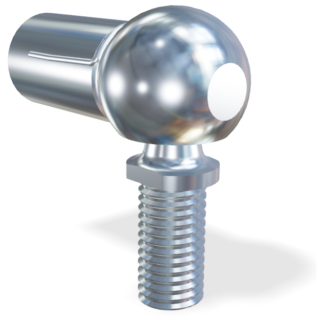Gas struts play a vital role in a variety of everyday applications, from car boots to adjustable furniture and industrial equipment. If you’ve ever needed to replace a gas strut or check its specifications, you may have noticed numbers printed on the side. These numbers provide important details about the strut’s force, size, and other characteristics. In this guide, we’ll walk you through how to read gas strut numbers so you can understand exactly what they mean and choose the right one for your needs.
What do the numbers on a gas strut mean?
The numbers printed on a gas strut tell you everything you need to know about its specifications. While it may seem confusing how to read them at first, they’re actually quite straightforward once you understand what to look for. Let’s break it down:
Force rating
The force rating, usually measured in Newtons (N), tells you how much force the strut can exert when it’s fully extended. For example, a gas strut marked 500N exerts 500 Newtons of force. This is an essential detail when replacing or selecting a strut, as using one with the wrong force rating could lead to improper operation.
Length and stroke
Two key measurements to note are the extended length and the stroke length:
- Extended length: This is the total length of the gas strut when it is fully extended, measured from the centre of one mounting point to the centre of the other.
- Stroke length: This refers to the distance the piston rod travels in and out of the strut.
Part number or model code
Manufacturers often include a unique part number or model code on the strut. This code helps identify the specific type, series, or features of the gas strut. If you’re ordering a replacement, providing this code can save time and ensure you get an exact match.
Rod and cylinder diameter
The diameters of the rod and the cylinder are usually expressed in millimetres. These measurements are important for understanding the strut’s compatibility with your application.
Production or batch codes
Some gas struts also include a production or batch code. These numbers aren’t usually needed for replacements but can be helpful for warranty claims or quality tracking.
How to read gas strut numbers
Let’s look at a few examples of gas strut markings and what they mean:
Example 1: 500N 10/22 300
- 500N: The strut exerts 500 Newtons of force.
- 10/22: The rod diameter is 10 mm, and the cylinder diameter is 22 mm.
- 300: The stroke length is 300 mm.
Example 2: ABC12345 600N 600/250
- ABC12345: The manufacturer’s part number.
- 600N: The strut produces 600 Newtons of force.
- 600/250: The extended length is 600 mm, and the stroke length is 250 mm.
Example 3: XYZ789 450N 15/28 450
- XYZ789: A unique model or batch identifier.
- 450N: The force rating of the strut.
- 15/28: The rod diameter is 15 mm, and the cylinder diameter is 28 mm.
- 450: The extended length is 450 mm.
Tips to read gas strut numbers
Here are a few simple tips to help you read gas strut numbers with ease:
- Refer to manufacturer documentation
Each manufacturer may use slightly different numbering systems. If you’re unsure, check the product manual or the manufacturer’s website for clarification on how to read them. - Focus on key specifications
Pay attention to the force rating, extended length, and stroke length. These details are the most critical when selecting a replacement. - Use online tools
Many manufacturers have online tools that allow you to input part numbers and retrieve full specifications. - Inspect the strut carefully
If the numbers are difficult to read, clean the surface gently to reveal the markings. Be careful not to damage the strut in the process.
Easily find the right gas strut with our online tools
We made finding the perfect gas strut easy! Use our online tools:
- Replacement tool: Over time, gas struts can lose their effectiveness, making quick replacement crucial for safety-critical situations. Our replacement tool simplifies finding and ordering equivalent gas struts from popular brands by entering the product number and selecting the recommended option.
- Calculator tool: Choosing the right size and strength of gas struts can be difficult, but our calculator tool makes it easy. By entering parameters such as length, weight, and angles, the tool recommends the best struts for your needs.
- Configurator tool: Our configurator tool lets you customise gas struts by selecting materials, mounting options, and viewing a 3D model. After specifying the required force in Newtons, you can add your custom gas spring to the cart and checkout easily.
If you have any questions about our gas struts and how to read the numbers, don’t hesitate to reach out to our customer service at [email protected] or +44(0)24 7645 5580.

